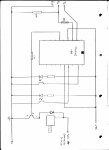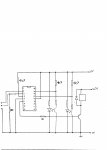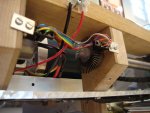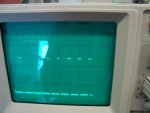Russel Lawrence
New Member
Hi everyone,
Im doing a uni project and some of you may already have read similar things from me but Im trying to get the circuitry correct so I can test (finally!)
Basically what im trying to do is use two photo refelctors to count how fast two wheels are going and then if one is going 'x' times faster then turn on a solenoid to push against it and act as a brake.
The wheels are all set up and have holes around the circumference that these two reflectors sit next to. When a hole passes it nothing registors but when the surface passes it light is reflected back onto it and it counts a pulse (I hope!)
Im using the 18A chip that ive been given and Ive attached this diagram of how i THINK it chould be set up. This might be completely wrong as im rubbish with electronics but I was hoping for some advice/help
Thanks alot,
russel
(also hope Ive actually attched the file!)
Im doing a uni project and some of you may already have read similar things from me but Im trying to get the circuitry correct so I can test (finally!)
Basically what im trying to do is use two photo refelctors to count how fast two wheels are going and then if one is going 'x' times faster then turn on a solenoid to push against it and act as a brake.
The wheels are all set up and have holes around the circumference that these two reflectors sit next to. When a hole passes it nothing registors but when the surface passes it light is reflected back onto it and it counts a pulse (I hope!)
Im using the 18A chip that ive been given and Ive attached this diagram of how i THINK it chould be set up. This might be completely wrong as im rubbish with electronics but I was hoping for some advice/help
Thanks alot,
russel
(also hope Ive actually attched the file!)
Attachments
-
364.8 KB Views: 54




